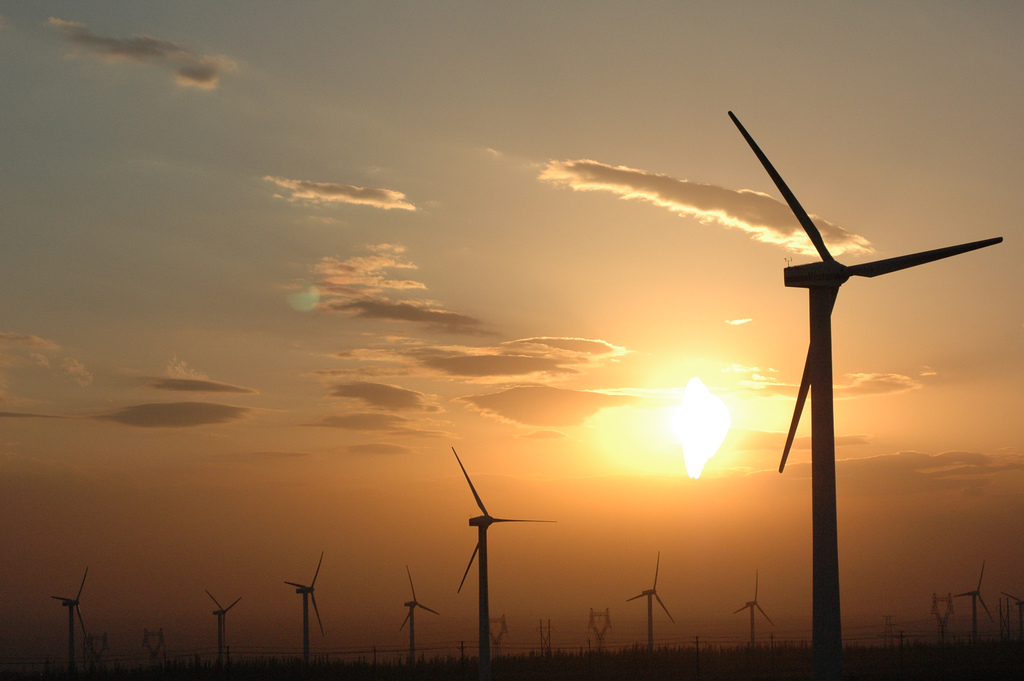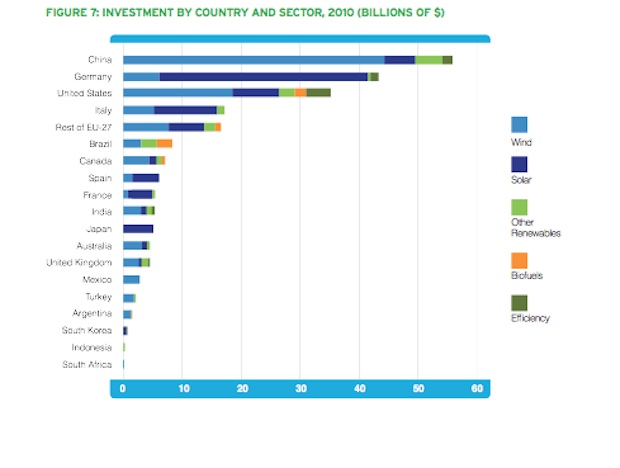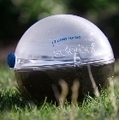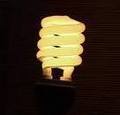China Wins 2010 Clean Energy Race With $54.4 Billion in Funding
by: fast company, 2011-03-29 18:34:17 UTC

Add renewable energy to the list of industries in which China is now coming out on top of the U.S. While China is still home to thousands of pollution-spewing factories, it's also now churning out wind turbines and solar panels at a world-record pace. According to The Pew Charitable Trusts' just-released Who's Winning the Clean Energy Race 2010 report--the country's private investment in clean energy soared in 2010, increasing by 39% from the previous year to $54.4 billion in funding. It's an impressive number, but clean energy investment isn't lagging elsewhere, either.
According to the report, the worldwide clean energy sector grew 30% from 2009 to $243 billion worth of finance and investment in technologies like wind, solar, biofuel, and geothermal. "The sector is marked by pretty explosive growth," says Phyllis Cuttino, Program Director of the Pew Clean Energy Program.

Asia is clearly the region to watch. In 2010, clean energy investment increased 33% over 2009 to $82.8 billion. In 2009, the region surpassed the Americas for the first time, and in 2010, investment grew faster than in Europe. The European region is still the leader for clean energy finance this year, with $94.4 billion in investments (mostly helped along by investments in small scale distributed capacity projects like rooftop solar panels), but Asia is quickly catching up.
From a national standpoint, the top three countries are China, Germany and the U.S., in that order. Again, Asia slipped past its competitors in recent years. The U.S. used to lead the sector until 2009, when China displaced it. This year, Germany beat the U.S., and China took the top spot. The reason? "National policies really matter. If you don't have one like in the U.S., it matters," says Cuttino.
Germany, for example, relies on a national feed-in tariff program, which lures homeowners and businesses into using renewables by offering above-market rates for feeding their excess clean energy back to the grid. And China's national action plan is helping the country use more hydro, wind, and solar power. The country has goals of 150 gigawatts of wind capacity by 2020 (it looks like they're going to
meet this goal five years early) and 20 gigawatts of solar
by 2020. For comparision, the U.S. currently has .6 gigawatts of solar and 33 gigawatts of wind. "China has an aggressive renewable energy target that investors have flooded in to help them meet," explains Cuttino.
The U.S. is lagging in this arena, lacking a comprehensive renewable energy policy and continuing to offer government cash to fossil fuel-based energy sources. But all isn't lost domestically. Clean energy investments did rise 51% between 2009 and 2010 to $34 billion. The fact that that was only enough to give the U.S. third place shows just how rapidly the clean energy sector is growing. And that's good news for everyone.
Follow Fast Company on Twitter.
[Top feature image by Flickr user janie.hernandez55]


 Battle of the Eco-Labels: Controversial Forest Certification Standard Dropped by Aetna, Allstate, Office Depot
Battle of the Eco-Labels: Controversial Forest Certification Standard Dropped by Aetna, Allstate, Office Depot
by: fast company, 2011-03-29 22:35:01 UTC

Forest certification is a program that ensures that the trees responsible for your paper are treated responsibly. Buy some certified paper and you can rest assured that the trees it came from weren't clear cut and that there are responsible plans for continuing the growth of the forest. But could it be that the world's largest forest certification program--Sustainable Forestry Initiative--is a scam? It's a question we first asked last fall when ForestEthics released its SFI: Certified Greenwash report (PDF), which examines a number of SFI's misdeeds. Apparently, some major companies also think SFI is bogus. Since ForestEthics released its report, companies like Aetna, Allstate, and Office Depot have begun to phase out SFI-certified paper.
The ForestEthics report on SFI claims that the certification is funded and managed by the world's largest timber companies, leading to incomplete and useless evaluations. In one particularly damning investigation, ForestEthics discovered that an SFI audit team spent five days examining a logging area bigger than Pennsylvania. The team found zero environmental violations and had no
recommendations for improvement.
These issues are clearly a big deal to big business. A number of leading paper purchasers have modified their use of SFI: Aetna is phasing out the SFI logo from printed marketing materials, Allstate is shifting paper in its facilities from SFI to FSC certification (a competing standard), Symantec is phasing out SFI certification from its paper marketing materials and packaging, and Office Depot has committed to phasing out use of the SFI logo on Office Depot brand paper. United Stationers, Garnet Hill, and Performance Bicycles have also made commitments to ditching SFI certification.
In response to ForestEthics' press release about paper purchasers ditching SFI, the certification organization posted a statement on its website:
ForestEthics continues to peddle pulp fiction about the Sustainable
Forestry Initiative, repeating the same old inaccurate and misleading
information...While we
respect businesses making choices, the real damage from ForestEthics’
campaign is the uneven playing field that it creates for well-managed
domestic forest practices and products. ForestEthics pushes
organizations to buy FSC only, but the vast majority of FSC’s supply is
offshore. Global trade in forest products is fine, but domestic
products managed to high standards shouldn’t be shut out due to
misinformation campaigns and pressure tactics. That can hurt our forest
communities and cost jobs.
Who should we believe? With so many different eco-labels covering so many different things--SFI, FSC, Fair Trade Certified, Energy Star, to start--it's difficult to discern which labels are trustworthy and which promote greenwashing. One general rule that companies might try to follow: Avoid using controversial eco-labels to begin with. That way, you don't have to ditch them later.
Follow Fast Company on Twitter. Ariel Schwartz can be reached by email.


 Solar Odyssey: Zero emission trimaran inspired by the Manta Ray
Solar Odyssey: Zero emission trimaran inspired by the Manta Ray
by: Ecofriend, 2011-03-29 05:17:52 UTC
Attitude:

This is one of those stunning designs that will woo you the moment you lay your eyes on it. Solar Odyssey was designed to circumnavigate the Atlantic Ocean with zero carbon emissions. While it is one thing to think about it and conjure up a model, it’s a whole different ball game when it comes to actually getting one out in the ocean. To their credit, Lemer Pax from Nantes, France have done it in some style!
Solar Odyssey is a trimaran that has its design inspired by one of the mystical and awe-inspiring creature of the oceans- the Manta ray. The unusual, yet captivating build of Solar Odyssey allows it to sport a wide assortment of photovoltaic panels that help propel it with zero carbon emissions. There is no doubt that the world’s oceans could use less carbon content and Solar odyssey achieves just that.
The iconic trimaran is 60 feet long and sports 1184 square feet of solar panels on the top which spread out like the wings of the manta ray to give the maximum possible solar energy while maximizing the efficiency of the photovoltaic panels. Its narrow, sleek design and clean energy allow it to hit top speeds of 33 knots when needed.
As it moves across the Atlantic and then on a possible trip across the globe, the team calculates its average speed will be around 8 knots and it will make the entire journey on zero emissions. Solar Odyssey itself was designed from recycled parts of other boats to further spread the message of eco-consciousness and to encourage recycling and reuse.
In intent, design and execution, Solar Odyssey stands out from the crowd and has nothing but green interest at heart that makes it one of the most promising projects we have seen so far in 2011.
Via: Solar-Odyssey


 Future Perfect - Powering your home with water
Future Perfect - Powering your home with water
by: Ecofriend, 2011-03-29 13:11:25 UTC
Dattatreya:

What’s happening right now?
With the advent of renewable sources of energy and most importantly the ingenious ways of optimally utilizing them, we are certainly going forth into an unprecedented ‘green’ era. Innovative conceptions adopting unique technologies such as effective photovoltaic arrays, efficient wind turbines and even naturalistic bio-fuels, are propitiously making their mark as embodiments of sustainability. But what if a figment of clean energy can support our personal space, our very private homes? Without any shred of doubt that would be a significant step forward, albeit in a much more micro and intimate level; a level we can all identify with.
Trends:
1. MIT professor hints at powering your home and car with 5 liters of water:

Dr. Daniel Nocera of MIT has contrived of this fascinating conception, which calls for an ultra-efficient electrolyzer made from a composite of cobalt and potassium phosphate, that can work at room temperature. It will integrate a 6 X 5 meter (30 sq m) photovoltaic array, and by utilizing the solar energy can produce hydrogen and oxygen from just 5 liters of water. The resultant hydrogen can power our entire house and even charge our electric vehicle for 500 km!
2. A bottle of wastewater could be powering your house by next year:

Nocera has struck again, and this time in collaboration with the eminent TATA group, has conceptualized an artificial ‘leaf’, composed of low-cost chemical catalysts like cobalt and phosphate. Touted to produce electricity more efficiently than solar cells, this ‘naturalistic’ design utilizes water molecules from any source. The water molecules are split by natural sunlight just like in photosynthesis.
3. Hydro electric generator reuses water for continuous electricity generation:

Named as the Hydraulic Silo, this effectual hydro-electric generator contrived by Dindo Mangubat, integrates 5 different components which makes sure that water is not at all wasted, but rather it goes back to the water tank, to be used again for rotation of the turbine blades.
The concept
All of the above trends have one thing in common - they have all taken an advanced step towards harnessing clean and ‘green’ energy, and that too in subtle ‘naturalistic’ way which mimics nature itself. A good example would be the conception put forth by Dr. Nocera where the artificial ‘leaf’ can concoct hydrogen and oxygen from waste water to produce electricity. This process clearly alludes to the wholly natural process of photosynthesis. And here’s a data to keep things into perspective - the rate of energy capture by photosynthesis is approximately 100 terawatts, which is about six times larger than the power consumption of human civilization. This alone speaks volumes about the efficiency of a natural system that humans endeavor to recreate for their own sustainability.
The advantages
The advantages can be clearly seen especially when these technologies take their ultimate form. A year later a small home can be powered by a single bottle of water, but, as Dr. Nocera puts it, the continued research could lead to a refrigerator-sized “mini power plant” that could generate enough power for three billion people.
The impact
Though we are perhaps talking about the not so immediate future, but this could result in an almost Utopian stage where clean energy generation would take place conveniently, optimally and most importantly cost effectively. And finally, we humans can settle in a world where sustainability has reached its full circle, albeit at a much personal level.
Source: EcoFriend


 Cleaning Up the Dirty Ingredients List
Cleaning Up the Dirty Ingredients List
by: Chemistry, 2011-03-28 11:30:00 UTC
Method, a leading innovator in cleaning products, lays out the backstory of its success and sheds light on why it's important to make soap more sustainable.
 Scientists unveil 'world's first practical artificial leaf'
Scientists unveil 'world's first practical artificial leaf'
by: Gizmag Emerging Technology Magazine, 2011-03-29 01:02:12 UTC

Leaves – the kind that grow on trees – create energy from sunlight and water through the process of photosynthesis. For over a decade, scientists have been kicking around the idea of creating an "artificial leaf." Such a device would use sunlight to split water into hydrogen and oxygen, which could then be stored in a fuel cell and used to create electricity. A functioning artificial leaf
has been created before, but was impractical due to the fact that it was made from expensive materials, and was highly unstable. Now, however, scientists are reporting that they have created a cost-effective, stable artificial leaf...
Continue Reading
Scientists unveil 'world's first practical artificial leaf'Tags: Artificial Leaf,
Eco-friendly,
Fuel Cell,
MIT,
Photosynthesis,
Renewable Energy,
World's First
Related Articles:


 New Eco-Friendly Nano-Bricks Packaging Helps Food Last Longer
New Eco-Friendly Nano-Bricks Packaging Helps Food Last Longer
by: Inhabitat , 2011-03-28 15:10:37 UTC

A group of researchers from Texas A&M University in College Station, Texas has developed a new, more environmentally friendly plastic material — which they call nano-bricks — that will help keep foods preserved for longer periods of time. The material,which resembles brick and mortar under a microscope, is made up of only 30% plastic polymers mixed with a natural clay material which makes it more air-tight than other available plastics. The group believes that this new material will give a boost to the food-packaging industry. While we’re all about creating new eco-friendly materials, we’re not sure this one is going to end up green in the long run since the 100 mile diet doesn’t need much plastic.



Read the rest of New Eco-Friendly Nano-Bricks Packaging Helps Food Last Longerhttp://www.inhabitat.com/wp-admin/ohttp://www.inhabitat.com/wp-admin/options-general.php?page=better_feedptions-general.php?page=better_feed
Permalink |
Add to
del.icio.us |
digg
Post tags: green packaging, Greenwashing, junk food packaging, nano bricks, new food packaging, packaged food, packaging the future, plastic packaging
Highview’s CryoEnergy System Efficiently Stores Energy With Liquified Air
by: Inhabitat , 2011-03-28 18:00:15 UTC

One of the major issues with renewable energy technologies like solar and wind power is that energy generation tends to be intermittent — i.e. the sun doesn’t always shine and the wind doesn’t always blow. Therefore, in order for such technologies to be capable of meeting our needs without the support of fossil fuels, we need to find effective and commercially viable ways to store energy. That’s why the guys at Highview Power Storage are getting particularly excited about their most recent technology – the CryoEnergy System (CES). CES takes excess energy generated and uses it to run refrigeration units which cool air down to a temperature of -196C (-320.8F), at which point it liquefies. The liquid air, also known as cryogen, can be stored in an insulated tank, and at times of peak-demand, when the direst output of existing energy sources cannot meet the demands of a power grid, this liquid air is released to generate energy.
Read the rest of Highview’s CryoEnergy System Efficiently Stores Energy With Liquified Airhttp://www.inhabitat.com/wp-admin/ohttp://www.inhabitat.com/wp-admin/options-general.php?page=better_feedptions-general.php?page=better_feed
Permalink |
Add to
del.icio.us |
digg
Post tags: "wind power", ces process, cryoenergy systems, daniel c jones, emission-free power generation, energy storage, highview power storage, power generation, regasification process, solar
Sustainable Business by Design 2011
by: Sustainable Design News, 2011-03-11 04:27:15 UTC
 Sustainable Business by Design 2011 will inspire designers to increase sustainable design practise and advise them how to market sustainability to their clients.
Sustainable Business by Design 2011 will inspire designers to increase sustainable design practise and advise them how to market sustainability to their clients.
Designers will also be able to discuss these issues with key figures from other sectors such as Food and Drink, Tourism, ICT and the Public Sector.



International E-Waste Design Competition 2011
by: Sustainable Design News, 2011-03-13 21:27:26 UTC
 Electronic waste, or "e-waste," generated by computers, TVs, cameras, printers, and cell phones, is a growing global issue.
Electronic waste, or "e-waste," generated by computers, TVs, cameras, printers, and cell phones, is a growing global issue.
Through the Second International E-Waste Design Competition, participants are asked to explore solutions to both remediate the existing e-waste problem and prevent e-waste generation in the future.













Comments by our Users
Be the first to write a comment for this item.